Re-imagining the Future of Mining Sites
Sponsored by: U.S. EPA, Office of Land and Emergency Management (OLEM), Superfund Redevelopment Initiative
Archived: Wednesday, December 7, 2016
2016-12-07
U.S. EPA, Office of Land and Emergency Management (OLEM), Superfund Redevelopment Initiative
Mining activities form an integral part of both historic and current economies in the United States. However, mining operations can also leave behind legacies of contamination. While abandoned mines no longer operate, many continue to have impacts on human health and the environment. At the same time, new and existing mining operations continue to expand. EPA works with mining stakeholders, including other federal agencies, states, tribes, local groups, and industries, not only to address the serious health and environmental challenges posed by some mining practices, but also to support the reuse of these areas to benefit the surrounding community. This webinar will explore the broad spectrum of safe and productive reuses possible at mining sites and present a case study highlighting several of these reuses in practice at a mining site in Salt Lake City, Utah.
Accessibility, Recording, and Content Disclaimer
Rehabilitation Act Notice for Reasonable Accommodation
It is EPA's policy to make reasonable accommodation to persons with disabilities wishing to participate in the agency's programs and activities, pursuant to the Rehabilitation Act of 1973, 29 U.S.C. 791. Any request for accommodation should be made to Sarah Alfano at 434-975-6700, ext 265 or salfano@skeo.com, preferably one week or more in advance of the webinar, so that EPA will have sufficient time to process the request. EPA would welcome specific recommendations from requestors specifying the nature or type of accommodation needed. Please note that CLU-IN provides both alternate phone call-in options and closed captioning for all webinars, and requests for these specific accommodations are not necessary.
Webinar Recording
By participating in this CLU-IN webinar, you automatically agree to authorize recording of audio and visual content presented during this live event and consent to subsequent use of this recording in the public domain by the U.S. Environmental Protection Agency. This recording may include questions, comments and poll responses provided by you during the live event in addition to your name, voice, image or likeness. This recording will be made available after the conclusion of the live event as part of the CLU-IN webinar archives, and will remain available indefinitely. If you do not wish to consent to the recording, please do not join the live event, and contact Jean Balent at 202-566-0832 or balent.jean@epa.gov to discuss your concerns.
Content Disclaimer
This webinar is intended solely to provide information to the public. The views and opinions expressed as part of this webinar do not necessarily state or reflect those of the U.S. Environmental Protection Agency. It is not intended, nor can it be relied upon, to create any rights enforceable by any party in litigation with the United States, or to endorse the use of products or services provided by specific vendors. With respect to this webinar, neither the United States Government nor any of their employees, makes any warranty, express or implied, including the warranties of merchantability and fitness for a particular purpose, or assumes any legal liability or responsibility for the accuracy, completeness, or usefulness of any information, apparatus, product, or process disclosed, or represents that its use would not infringe privately owned rights.
Presenters:
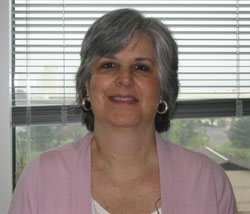 Melissa Friedland, EPA Superfund Redevelopment Initiative (friedland.melissa@epa.gov)
Melissa Friedland, EPA Superfund Redevelopment Initiative (friedland.melissa@epa.gov)
Melissa Friedland is the Superfund Program Manager for Redevelopment and supports the Superfund Redevelopment Initiative, EPA's effort to return contaminated Superfund sites to productive use. Ms. Friedland has been involved with the Initiative since its inception in 1999. She is also the National Program Manager for the Superfund Job Training Initiative in Regions 1 - 5. She has worked at EPA since 1980, beginning in the RCRA program, followed by enforcement, and moving to the Superfund program in 1985. Ms. Friedland has managed the Superfund community involvement program and has served on detail to EPA's New England regional office, the Department of the Navy and the Department of Housing and Urban Development. She has also worked as a volunteer mediator with the District of Columbia government.
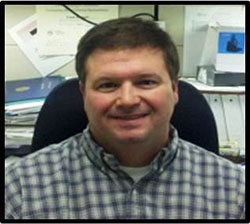 Frank Avvisato,
EPA Superfund Redevelopment Initiative (avvisato.frank@epa.gov)
Frank Avvisato,
EPA Superfund Redevelopment Initiative (avvisato.frank@epa.gov)
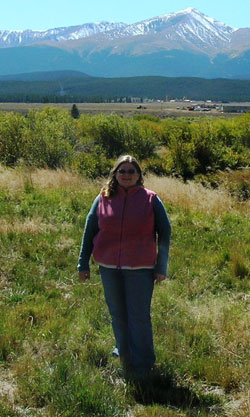 Michele Mahoney, EPA Technology Innovation and Field Services Division (mahoney.michele@epa.gov)
Michele Mahoney, EPA Technology Innovation and Field Services Division (mahoney.michele@epa.gov)
Michele Mahoney works on contaminated site remediation and reuse within EPA's Superfund program. She provides support to practitioners on the use of soil amendments for remediation and redevelopment/reuse, ecological revitalization, terrestrial carbon sequestration, and urban gardening. She also researches and compiles information on mining site remediation technology and land reuse, and manages content development for the EcoTools and Mining pages on CLU-IN.org. Michele recently led the development of a resource guide on treatment technologies for mining-influenced water.
Michele has worked with EPA for over 14 years. Prior to her current responsibilities, Michele served the Agency as the lead for food waste composting issues and as an environmental fate and ecological risk assessor for pesticide registration.
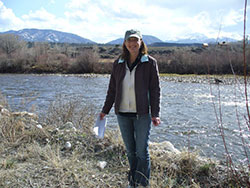 Kerri Fiedler, EPA Region 8 (fiedler.kerri@epa.gov)
Kerri Fiedler, EPA Region 8 (fiedler.kerri@epa.gov)
Kerri Fiedler is the Remedial Project Manager for EPA on the Kennecott North and South Zones. Kerri has been in EPA's Superfund Remedial program since 2009. Before that she spent 9 years in EPA's Air Program. Kerri has a chemical engineering degree from the Colorado School of Mines.
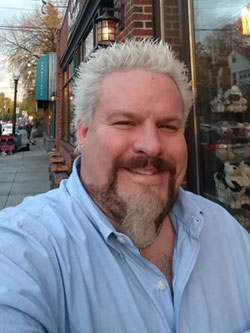 Douglas Bacon,
Utah Department of Environmental Quality (dbacon@utah.gov)
Douglas Bacon,
Utah Department of Environmental Quality (dbacon@utah.gov)
Douglas Bacon has worked for the Utah Department of Environmental Quality (UDEQ) sine 1997. Beginning with the Division of Water Quality - Monitoring Section, Doug gained a vast knowledge of the secret gems in Utah to get away from it all. In 1999 he moved into the Division of Environmental Response & Remediation and assumed the management and day to day oversight of response actions at the Kennecott North and South Zones, Superfund Site. Doug is also Utah's Natural Resource Damage Trustee representative overseeing the response actions by Kennecott and a local water service district to address two groundwater plumes underlying a 72-square mile area and provision of treated water to the affected communities. The NRD project represents one of the first applications of reverse osmosis to treat mining influenced water and provision of treated water to the public in the Western US (based on production volumes). Since 2008 Doug has been a member of the Interstate Technology Regulatory Council (ITRC) first assisting the Mine Waste Treatment Technology and Biochemical Reactors for Treating Mining Influenced Water teams. He actively participates in the implementation of and training on the use of these guidance documents. In 2014 Doug was appointed as Utah's Point of Contact. In 2016 he was appointed to the Board of Advisors as the newly selected State Engagement Coordinator. Doug has a B.S. degree in Environmental Biology from Plymouth State College and holds "Certified Public Manager" credentials from Utah's Certified Public Managers Program.
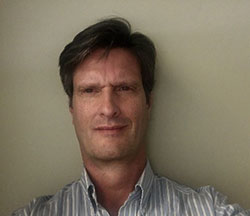 John Birkinshaw, Kennecott Utah Copper (john.birkinshaw@riotinto.com)
John Birkinshaw, Kennecott Utah Copper (john.birkinshaw@riotinto.com)
John Birkinshaw is the Principal Advisor Land Resources for Rio Tinto's Copper and Diamonds Product Group and directly responsible for land management activities at Kennecott Utah Copper's operations in Salt Lake City, Utah. Mr. Birkinshaw's primary management responsibilities include; land reclamation and remediation with direct management of the organization's CERLCA land related activities. He is also responsible for land development planning, commercial leasing, and land divestment activities. He has worked at Rio Tinto since 1992, beginning in the Environmental Remediation Group, which performed the remedial activities on the various Operable Units within the Kennecott South Zone site. He then moved to Rio Tinto's land development company, Kennecott Land, where he was involved in the initial planning and development of the Daybreak Community. Mr. Birkinshaw is now focused on completing numerous components necessary to advance Kennecott's North Zone Consent Decree.
Moderators:
 Michele Mahoney, U.S. EPA Technology Innovation and Field Services Division (mahoney.michele@epa.gov)
Michele Mahoney, U.S. EPA Technology Innovation and Field Services Division (mahoney.michele@epa.gov)
Michele Mahoney works on contaminated site remediation and reuse within EPA's Superfund program. She provides support to practitioners on the use of soil amendments for remediation and redevelopment/reuse, ecological revitalization, terrestrial carbon sequestration, and urban gardening. She also researches and compiles information on mining site remediation technology and land reuse, and manages content development for the EcoTools and Mining pages on CLU-IN.org. Michele recently led the development of a resource guide on treatment technologies for mining-influenced water.
Michele has worked with EPA for over 14 years. Prior to her current responsibilities, Michele served the Agency as the lead for food waste composting issues and as an environmental fate and ecological risk assessor for pesticide registration.
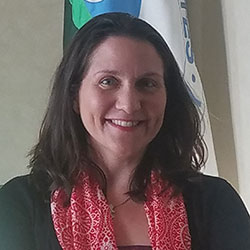 Jean Balent, U.S. EPA Technology Innovation and Field Services Division (balent.jean@epa.gov)
Jean Balent, U.S. EPA Technology Innovation and Field Services Division (balent.jean@epa.gov)
Ms Balent is on the staff of the EPA's Technology Innovation and Field
Services Division
where she has worked to collect and disseminate hazardous waste
remediation and
characterization information since 2003. Ms Balent manages the Clean Up
Information
Network website and actively supports online
communication and
collaboration resources available to EPA. She formerly worked with the
US Army Corps
of Engineers Environmental Engineering Division in the Buffalo District.
Ms Balent was
also a member of the SUNY-Buffalo Groundwater Research Group where she
constructed and tested large scale models of groundwater flow. Ms Balent
has also
conducted research relating to the Great Lakes, environmental
remediation, and
brownfields re-development. She holds a Bachelor's degree in
environmental
engineering from SUNY-Buffalo and a Master's degree in Information
Technology from
AIU.
Webinar Slides and References:
- Introduction, Melissa Friedland, EPA Superfund Redevelopment Initiative:
- Ecological Revitalization at Mining Sites, Michele Mahoney, EPA Technology Innovation and Field Services Division:
- Re-imagining Mining Sites: Kennecott North and South Zones, Kerri Fiedler, EPA Region 8:
- Re-imagining Kennecott: Remediation and Maintenance, Douglas Bacon, Utah Department of Environmental Quality:
- Re-imagining Kennecott: Collaboration for Successful Residential and Ecological Reuse, John Birkinshaw, Kennecott Utah Copper:
- Conclusion, Melissa Friedland, EPA Superfund Redevelopment Initiative:
Webinar Slides and References:
- Introduction, Melissa Friedland, EPA Superfund Redevelopment Initiative:
- Ecological Revitalization at Mining Sites, Michele Mahoney, EPA Technology Innovation and Field Services Division:
- Re-imagining Mining Sites: Kennecott North and South Zones, Kerri Fiedler, EPA Region 8:
- Re-imagining Kennecott: Remediation and Maintenance, Douglas Bacon, Utah Department of Environmental Quality:
- Re-imagining Kennecott: Collaboration for Successful Residential and Ecological Reuse, John Birkinshaw, Kennecott Utah Copper:
- Conclusion, Melissa Friedland, EPA Superfund Redevelopment Initiative:
Additional Resources:
- Seminar Archives
- Superfund Redevelopment Initiative Website
- SRI Quarterly Webinar Series Website
- SRI Coordinators
- SRI Partnerships
- Understanding the Superfund Alternative Approach
- Green Remediation Best Management Practices - Mining Sites
- Hardrock Mining Framework
- Mine Waste Issues in the United States
- Mining Waste Treatment Technology Selection
- Abandoned Mine Lands - A Decade of Progress Reclaiming Hardrock Mines
- ECOTOOLS
- Characterization, Cleanup and Revitalization of Mining Sites
- Mine Waste Treatment Technology Selection Guidance
- Bingham Canyon Water Treatment Plant Kennecott South Zone Case Study
If you have a suggested topic or idea for a future CLU-IN internet seminar, please contact:
Technology Integration and Information Branch
PH: 202-566-0832 | Email: balent.jean@epa.gov
Technology Integration and Information Branch
PH: 202-566-0875 | Email: adam.michael@epa.gov





